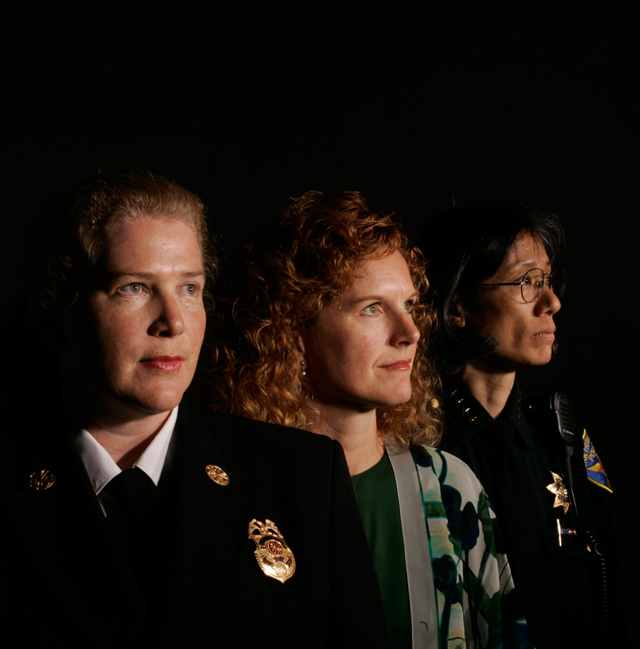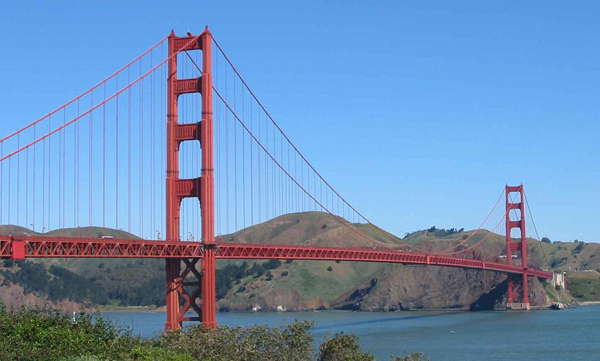CEDAW in San Francisco
From International Human Rights to Local Policies for Women

View Larger >
CEDAW is the foremost U.N. treaty that addresses sex-based discrimination. It defines discrimination as:
"Any distinction, exclusion or restriction made on the basis of sex...in the political, economic, social, cultural, civil or any other field."
It was drafted by the U.N. Commission on the Status of Women and adopted by the UN General Assembly in 1979. The declaration lays out 30 articles that address everything from voting rights to land ownership to responsibility sharing in childcare to accessible education for girls to maternal health.
The U.S., Iran, Somalia and Sudan are among the few remaining countries yet to ratify the women's declaration. Although U.S. President Jimmy Carter signed CEDAW in 1980, the decision to officially ratify the treaty yet to be voted into law as of 2008.
"In the U.S., we don't use CEDAW because I think we mistakenly believe that our Constitution and civil rights cover all issues. But civil rights do not address the issues that affect women like human rights do," says Anu Menon, Policy Analyst at the San Francisco Department on the Status of Women.
CEDAW in San FranciscoA coalition of women's organizations, including WILD for Human Rights (Women's Institute for Leadership and Development) and Amnesty International, worked with government officials to pass and implement CEDAW in San Francisco.
From 1998 to 2008, a CEDAW taskforce and San Francisco's Department on the Status of Women launched an aggressive strategy of gender analysis -- a system of reviewing government activities that is attentive to effects on all genders.
When it comes to assessing discrimination, data is everything. The first thing San Francisco needed to do was gather information on how women used, or were affected by, city services.
City departments collected data on staffing, budget allocations and services provided. They not only had to track how many women they were affecting, but also their race, immigration status, parental status, language, sexual orientation, disability and age when available.
Education was the next step. Government employees were trained on how to read the data they collected through a gender and a human rights lens. For example, they discovered that female juvenile offenders were the largest growing population in detention centers. Many required counseling for histories of sexual abuse, a service not offered in a system set up for boys.
"The bottom line is that most people don't think about gender that much. When we go through these analyses, it is a consciousness and awareness building. People see that women and girls have different needs than men and boys," says Ann Lehman, Senior Policy Analyst at the San Francisco Department on the Status of Women.
Changing the Face of City Politics
Armed with data and awareness, participating city departments changed their services to greater address the needs of women and girls. Their solutions often benefited men and boys as well. For example:
- Flexible work schedules were implemented citywide, which allowed many more women (and men) with family responsibilities to work for the city.
- Harsher sentences for domestic abusers were put in place.
- Streetlights were increased in poorly lit areas to help women feel safer at night and to combat violence against women on city streets.
- The Arts Commission made a simple change to the timing of its programs, which allowed many more women artists to participate
CEDAW has changed the atmosphere of politics in San Francisco. Not only has it brought gender to the forefront, it has helped to balance the number of men and women in leadership positions--including at some of San Francisco's highest budgeted departments such as the fire department, police department and port authority, which are all led by women.
"Through CEDAW gender analysis, we now know how many women serve on City Commissions and boards. By a new law, our Department will be monitoring these appointments for every Mayoral administration," reports Dr. Emily Murase, Executive Director of the Department on the Status of Women.
Attracting Everyone's Attention--Except for the U.S. Government
San Francisco's model has attracted the world's interest. Everyone from Swedish government workers to Indonesian human rights organizers is calling for advice on gender analysis. Even the private sector has taken notice. In 2008, 14 San Francisco companies signed on to bring gender analysis into their business practices.
The U.S. government, on the other hand, has paid little notice. San Francisco's pleas to pass CEDAW at the federal level have gone unheeded.
Criticisms of CEDAW
Countries that have ratified CEDAW have sometimes preferred to keep the status quo. Countries are allowed to make reservations or special provisions when they adopt CEDAW, leaving some to question the effectiveness of this human right treaty to actually create change.
For example, Algeria, which ratified CEDAW in 1996, makes reservations to keep intact the Algerian Family Code, a law that some Algerian women activists say is discriminatory.
Other critics say that CEDAW is written from a Western viewpoint that places an individual's needs over the needs of the community. What might work in San Francisco, for example, may not be relevant in Khartoum.
Critics also argue that the treaty narrowly defines discrimination as between sexes and doesn't account for discrimination women face based on race, sexual orientation, class, ability or other prejudices--an issue that San Francisco has tried to address in its own implementation of CEDAW.
CEDAW's Global Successes
As evidence of the treaty's effectiveness, proponents point to the changes in countries around the world in CEDAW's first 25 years. For example:
- Sierra Leone mandated 50 percent gender quotas for township committees
- Viet Nam granted women equal rights to land-use titles
- Kenya took on sexual harassment in the workplace
- Honduras pushed policies to make agricultural training and loans available to women farmers
- Austria amended policies for maternity protection and paternity leave
- Cambodia created a women's ministry
- Estonia took measures to stop trafficking of women and girls
- Canada created an institute to address health disparities across genders
Being Part of a Global Movement
For the women putting CEDAW into practice in San Francisco, being part of a global human rights movement has been inspirational -- even if it has meant bypassing their own federal government to do so. They have been invited to U.N. trainings and conferences and have met women from across the Americas who are working on their same struggle for gender equity.
"It's always so inspiring to come together with people from other countries and see what others are doing at the ground level. It helps to keep each other going," says Lehman, "because this work is hard."


